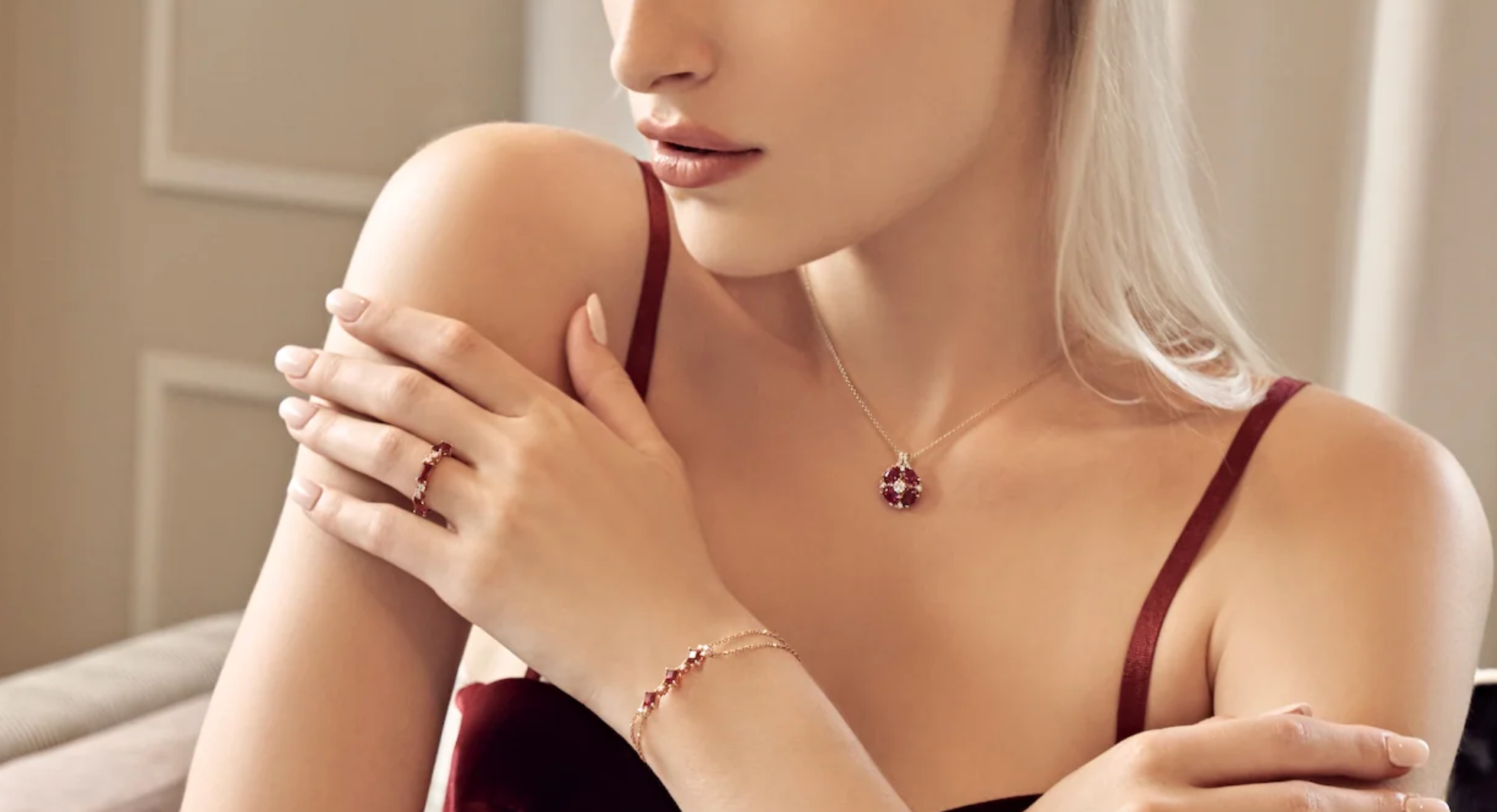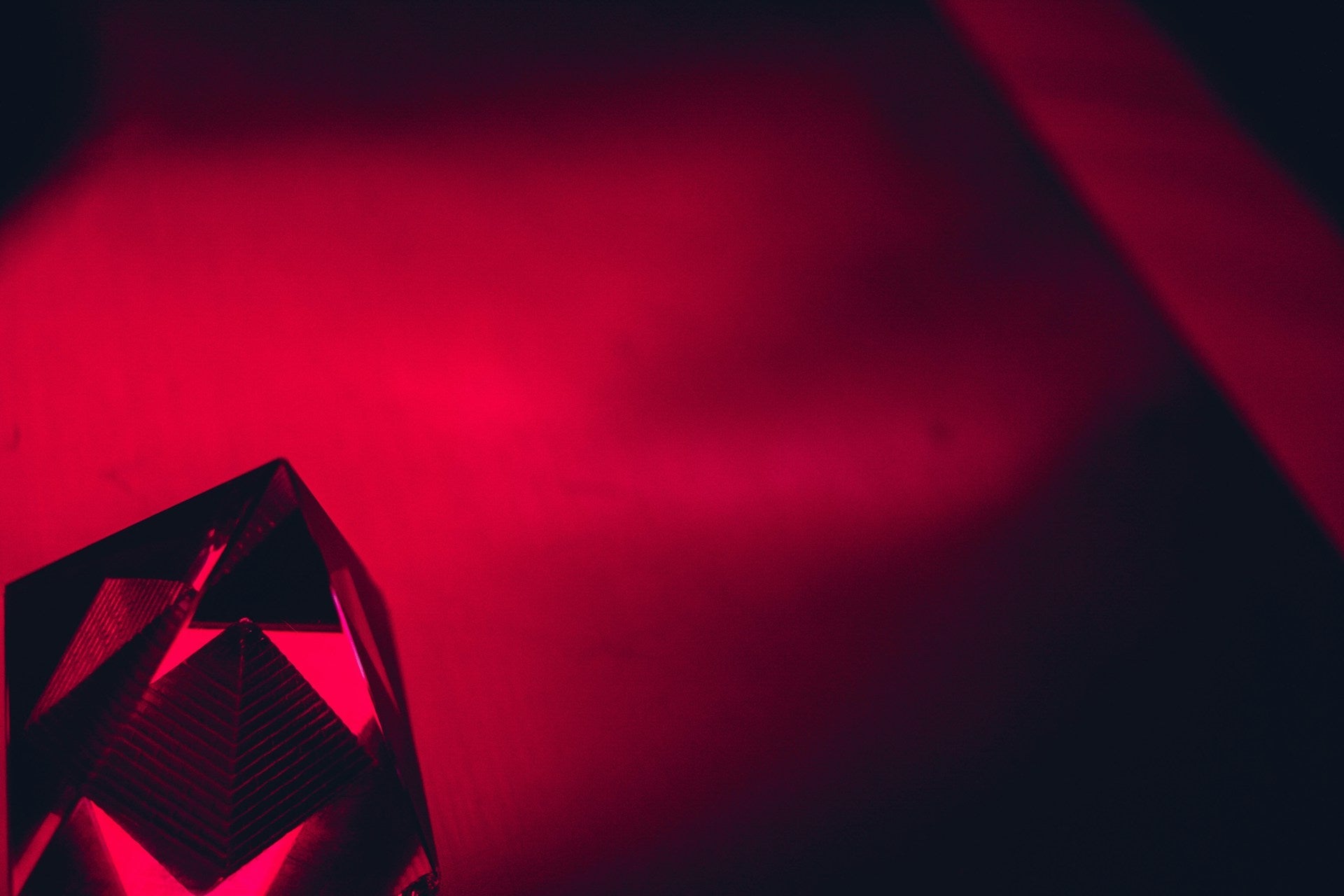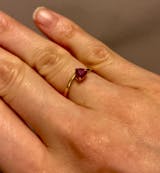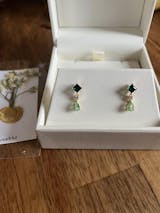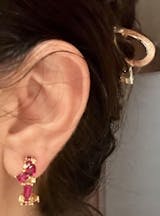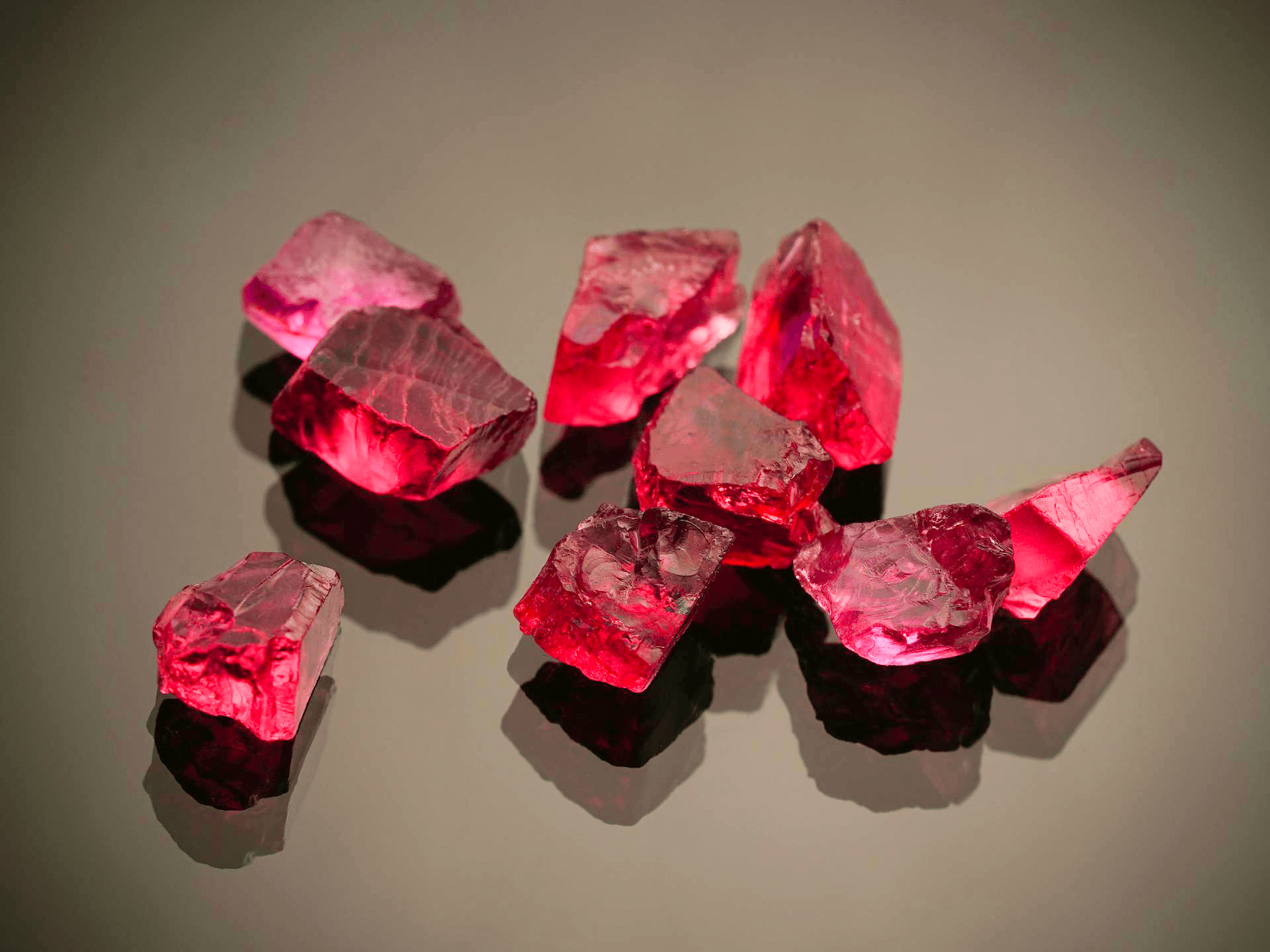
Ruby Jewellery Buying Guide
Table of Content: Inside this Article
...What Are Rubies?
Rubies are exquisite red gemstones, prized for their vibrant colour and durability. They rank 9 on the Mohs scale, second only to diamonds in hardness. Their hardness and their enchanting red hue (thanks to a variety of corundum minerals), make them exceptionally suitable for everyday wear in rings, necklaces, and other jewellery pieces.
The finest rubies display a deep, vivid red with a hint of blue, often described as "pigeon's blood" colour. This coveted hue results from the presence of chromium in the stone's structure. Whilst they can range from pinkish-red to orangey-red, the most valuable specimens exhibit a pure, intense red.
Unlike diamonds, they are often valued more for their colour than their size, with a small, high-quality ruby potentially fetching a higher price than a larger, less vibrant stone.
What Does Ruby Symbolize?
Rubies have held profound significance across cultures for millennia, their symbolism as rich as their colour. In ancient Sanskrit, they were called 'ratnaraj', meaning 'king of precious stones', a title that reflects their enduring prestige. This regal association persists, with ruby gemstones featuring prominently in crown jewels worldwide.
Beyond royalty, rubies symbolise intense emotions and vital life force. Their deep red colour has long been associated with the heart, representing love, passion, and courage.
In many Eastern cultures, ruby gemstones are believed to offer protection and promote prosperity, often worn as amulets or set into armour for safeguarding.
Ruby Symbolism in the 21st Century
Modern interpretations embrace these historical meanings whilst also viewing rubies as symbols of personal power and self-confidence. This layered symbolism, coupled with their natural beauty, makes ruby jewellery not just an accessory, but a meaningful personal statement, often chosen for significant life events or as heirloom pieces.
Origins of Ruby: Where Do Rubies Come From?
Rubies are found in various locations around the globe, each source lending unique characteristics to the gems. Myanmar (formerly Burma) has long been renowned for producing the world's finest ruby gemstones, particularly from the legendary Mogok Valley. Thailand is another significant source, known for darker, more brownish-red. In recent decades, Madagascar has emerged as a major ruby producer, yielding stones that rival Burmese quality. Other notable sources include Sri Lanka, famed for its pinkish colour, and Tanzania, where the Winza deposit produces vibrant, fluorescent stones. Rubies are also mined in Vietnam, Afghanistan, and Tajikistan, each region imparting subtle differences in hue and clarity. The origin of a ruby can significantly influence its value, with Burmese gemstones often commanding the highest prices due to their historical prestige and exceptional quality.

Natural or Lab-Created Rubies: Which One Should You Choose?
The ruby market offers both natural and lab-created options, each with distinct characteristics. Natural rubies, formed over millions of years under intense heat and pressure within the Earth, are prized for their rarity and unique inclusions that gemologists call "nature's fingerprints". These inclusions can actually increase a ruby's value, particularly if they form star patterns.Lab-created ruby gemstones, whilst chemically identical to natural ones, are produced in controlled environments over up to 24 weeks. They typically offer more consistent colour and clarity at a lower price point. However, they lack the geological history and potential appreciation in value associated with natural rubies. Ethically, lab-created rubies sidestep concerns about mining practices, though many natural ruby sources now adhere to strict ethical standards. Ultimately, the choice between natural and lab-created rubies depends on personal preferences, budget, and the significance placed on the stone's origin.
How to Determine Ruby Quality
Assessing ruby quality involves several key factors: Colour, Clarity, Cut, and Carat weight.
-
Colour of the Ruby: The most critical factor in ruby valuation. The finest rubies display a vivid, saturated red with a slight blue undertone, often described as "pigeon's blood". Stones that are too light or have orange or brown undertones are generally less valuable.

-
Ruby Clarity: Unlike diamonds, rubies are expected to have inclusions. These "silk" inclusions can actually enhance the stone's value if they create desirable optical effects like asterism (star effect). However, inclusions that diminish transparency or threaten the stone's durability will decrease value.
-
Rubies Cut: A well-cut ruby maximises colour and brilliance whilst maintaining optimal carat weight. Traditional cuts like oval and cushion are popular, but skilled cutters may use non-standard shapes to showcase a particular stone's best features.
-
Carat Weight of the Ruby: Larger rubies are rarer and thus more valuable per carat. However, a smaller ruby of exceptional colour and clarity may be worth more than a larger stone of lesser quality.
-
Origin of the Ruby Gemstone: The ruby's source can significantly impact its value. Mogok Valley rubies, often command premium prices due to their legendary status and typically superior colour.
-
Treatment of the rubies: Most undergo heat treatment to enhance colour and clarity, a practice accepted in the trade. Untreated gemstones of high quality are extremely rare and valuable. Other treatments like lead-glass filling are less desirable and should be disclosed.
-
Ruby’s Fluorescence: Strong red fluorescence under ultraviolet light can enhance a ruby's colour, making it appear more vibrant in daylight.
Why Ruby Prices Vary
When evaluating a ruby, it's crucial to consider all these factors holistically. The cost of rubies can vary dramatically, from relatively affordable to extraordinarily expensive. A certificate from a reputable gemological laboratory like IGS can provide objective information about a stone's characteristics, but ultimately, the beauty and value of a ruby are in the eye of the beholder.
Are Rubies a Good Investment?
Rubies can indeed be a sound investment, but as with any precious gemstone, there are several factors to consider:
-
Rarity and Demand: High-quality - especially those over 5 carats, are increasingly rare. This scarcity, coupled with consistent demand, suggests potential for appreciation over time.
-
Historical Price Trends: They have shown steady price increases over the past decades, outperforming many other gemstones and even some traditional investment vehicles.
-
Portability and Privacy: Rubies offer a compact store of wealth that's easily transported and can be kept private, unlike many other investments.
-
Market Knowledge: Successfully investing in ruby jewellery and gemstones requires significant expertise. The subtleties that differentiate an exceptional ruby from a good one can dramatically impact value.
-
Liquidity: While high-quality rubies tend to hold their value, they may not be as quickly or easily sold as more liquid assets like stocks or bonds.
-
Certification and Provenance: Gemstones with certificates from respected gemological laboratories and those with noteworthy provenance often have better investment potential.
-
Long-term Outlook: Ruby investments typically perform best over longer periods, allowing time for appreciation and market fluctuations to smooth out.
While rubies can be a viable investment, they should be approached with caution and ideally as part of a diversified portfolio. For many, the primary value of ruby jewellery lies in its beauty and emotional significance rather than its investment potential.
Experience the Beauty of Ethical Luxury with Juvetti's Lab Grown Rubies
At Juvetti, we believe that true luxury should never come at the expense of our planet or its people. That's why we're proud to offer our exquisite collection of lab grown rubies, each as captivating and genuine as those formed in the earth, but with a clear conscience.
"Wear your values as beautifully as you wear your jewellery."
Whether you're searching for a meaningful gift, a stunning engagement ring, or a timeless addition to your personal collection, our lab grown rubies offer the perfect blend of beauty, quality, and ethical responsibility.
Frequently Asked Questions
How can I tell if a ruby is real?
-
While professional gemological testing is the most reliable method, you can look for these indicators:
- Hardness: They should resist scratching from most materials.
- Colour: Natural rubies often have slight colour variations.
- Inclusions: Most natural ones have internal features visible under magnification.
- Fluorescence: Many of them fluoresce red under UV light.
Are lab-created rubies real rubies?
- Yes, lab-created rubies have the same chemical composition and physical properties as natural ones. They are genuine rubies, differing only in their origin.
What's the difference between a ruby and a pink sapphire?
- Rubies and pink sapphires are both varieties of corundum. The distinction is based on colour: gems with a dominant red hue are classified as rubies, while those with more pink are considered pink sapphires.
How should I care for my ruby jewellery?
- Clean your ruby jewellery with mild soap and warm water, using a soft brush if necessary. Avoid ultrasonic cleaners if your ruby has been treated or has significant inclusions. Store ruby jewellery separately to prevent scratching other gems.
Can rubies be worn every day?
- Yes, rubies are highly durable (9 on the Mohs scale) and suitable for daily wear. However, remove ruby jewellery during vigorous activities or when working with harsh chemicals.
Are all rubies treated?
- Most rubies on the market have undergone heat treatment to enhance their colour and clarity. Untreated gemstones of high quality are rare and command premium prices.
What's the symbolic meaning of ruby jewellery?
- Rubies symbolise passion, love, courage, and prosperity. They're often associated with vitality and are the birthstone for July.
How do rubies compare to diamonds in terms of value?
- High-quality rubies can be more valuable than diamonds of the same size. However, diamond values are more standardised, while ruby values can vary significantly based on colour and origin.


